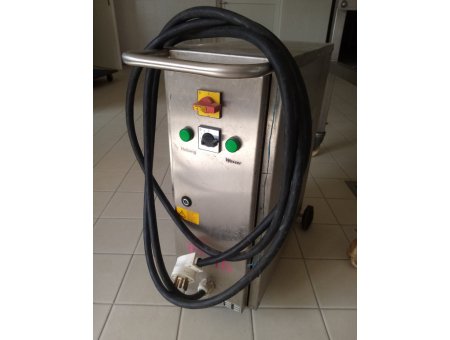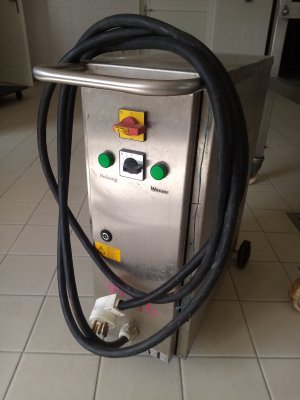Steam generator
Steam generators are heat exchangers that transform water into steam to clean and disinfect surfaces. They require a certain contact time and adequate pressure to be effective. The steam produced, at around 110°C, consumes between 15 and 35 litres of water per hour. Installation of the steam generator requires connections for cold water, drainage and electricity, and regular maintenance, such as descaling, is crucial to maintaining its performance.

Operating principle
Steam generators are heat exchangers that use energy from the primary circuit to transform water from the secondary circuit into steam to power the turbine.
The steam generator produces steam to clean and disinfect surfaces. Its action requires a minimum contact time with the surfaces, and it must produce steam for this minimum duration. Its action can be enhanced by use under pressure.
The compatibility of materials must be checked for steam application. The main parameters for the procedure are contact time and pressure.
The steam generator produces steam to clean and disinfect surfaces. Its action requires a minimum contact time with the surfaces, and it must produce steam for this minimum duration. Its action can be enhanced by use under pressure.
The compatibility of materials must be checked for steam application. The main parameters for the procedure are contact time and pressure.
- Water consumption 15 to 35 litres/hour.
- The steam is at around 110°C when it leaves the unit.

Steam generator
Method of use
To install a steam generator, you need a cold water supply, a water drain and an electrical supply, the power of which will depend on the appliance chosen.Regular descaling will extend the life of the appliance and maintain optimum performance.
Usual method of use:
- rinsing the barrel with a jet of water,
- high-pressure cleaning with a hot or cold water hose, followed by a cold water rinse,
- steam cleaning (at least 15 minutes),
- rinse with cold water to cool the barrel to 40°C.












